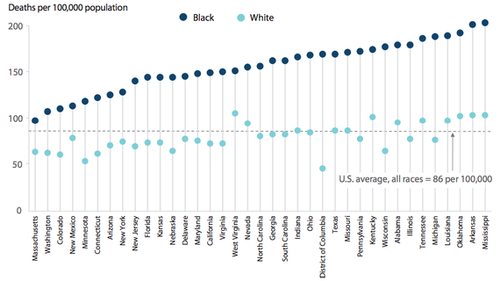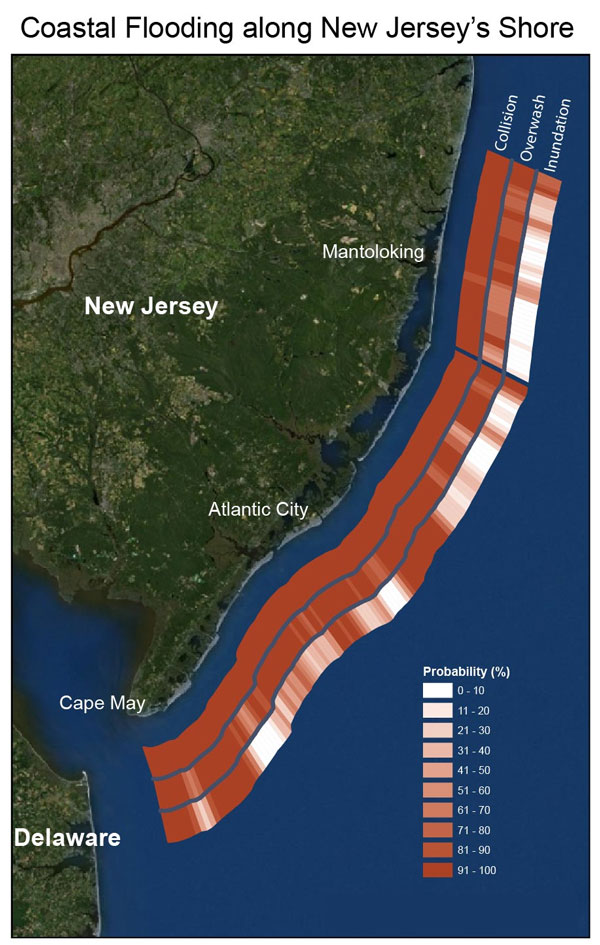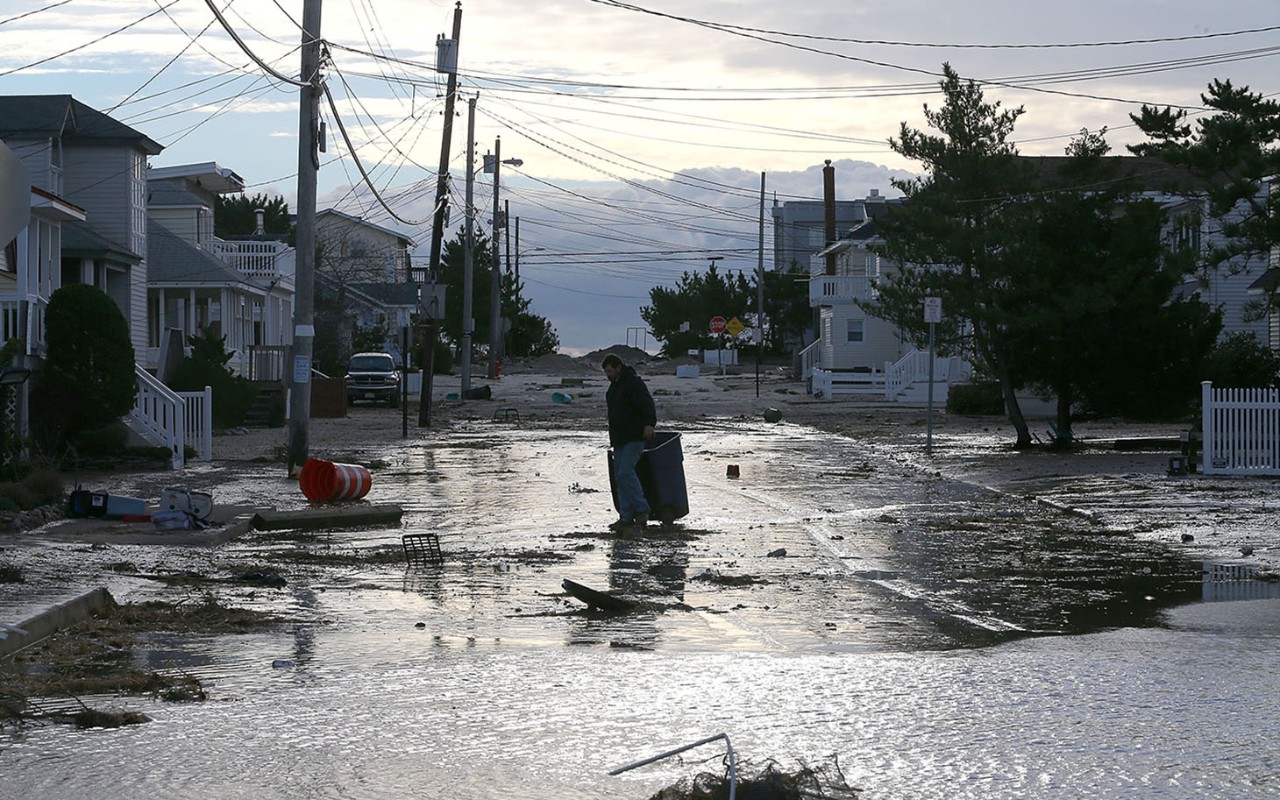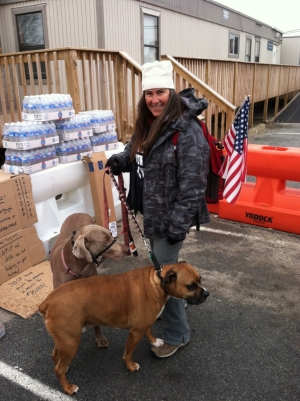NJ Spotlight, June 2, 2014
Various factors suggest that state still has long way to go in aftermath of October 2012 hurricane
Nineteen months after Sandy, how far along are New Jersey and its residents in getting back on their feet? It’s clear that substantial progress has been made from the days when boardwalks were heaps of rubble and piles of sand and debris lined the streets.
But how much work remains to be done, and what challenges lie ahead? Here’s a sampling of 10 indicators providing snapshots of where the recovery stands at this point.
1. Distribution of aid money
Over one year after officials with the U.S. Department of Housing and Urban Development (HUD) approved New Jersey’s spending plan for the first $1.8 billion in Community Development Block Grant Sandy aid, less than one-quarter of that funding has been distributed. That’s according to the state’s latest performance review to the federal government, which notes that although $1.3 billion is “in the pipeline,” only $416 million had actually been disbursed as of March 31.
The Christie administration has blamed the delays on federal red tape, and it has said they’re constantly making changes to improve efficiency and get the money to Sandy survivors as quickly as possible. HUD Secretary Shaun Donovan was also quoted earlier this year saying that New Jersey was handing out aid dollars “faster than in any prior major disaster.” All things considered, state officials say they’ve made “tremendous progress” and “expect that this momentum will continue through 2014.”
2. Tax shortfalls
In the course of just a few hours, Sandy caused billions of dollars in losses to the tax bases of municipalities up and down the coast. Places like Mantoloking, Toms River, and Seaside Heights saw their ratables erode by as much as a third. As a result, tax collections in many communities were lower than usual last year. The blow was softened considerably by FEMA disaster loans and Essential Services Grants to municipalities. But it’s not known how long that funding will last, and towns could be in trouble if the aid dries up before they’re fully rebuilt.
3. Tourism figures
The Christie administration recently released a studyclaiming that 2013 tourism had broken previous records, but a closer look at the numbers doesn’t necessarily say that the Jersey Shore has rebounded. According to the data, two of the four shore counties — Ocean and Atlantic — both saw declines in tourism-industry sales, and most of the growth actually came from Morris County and other areas in the northern part of the state. In addition, a recent investigation by the Asbury Park Press found that beach badge sales — a key indicator of how many vacationers visit the shore — actually dropped in Monmouth and Ocean counties by $5.6 million. The paper noted that tourism officials relied heavily on revenue generated by the hotel occupancy tax, but the reason hotels were so booked may have been because they were filled with aid workers and residents left homeless by the storm. All eyes are watching to see how thing go this summer.
4. Housing and rental market
Sandy damaged nearly 350,000 homes across the state, including more than 15,000 rental units. A year and a half later, the current health of the coastal housing and rental market is one of the more mixed indicators on this list.
On the one hand, current trends appear to be positive. Prices in many places have dropped, and prospective buyers with financial means are rushing in, eager to scoop up properties at a discount.
Meanwhile the latest data from the Census Bureaushow that new home building permits are up 20 percent in Monmouth County and have more than doubled in Ocean County for the first quarter of this year.
The vacation rental website HomeAway.com reports that bookings for the Jersey Shore are already close to 70 percent higher than this time last year, an indicator that summer tourism could see a rebound.
But for working class residents of the Jersey Shore and those still struggling to recover from the storm, the picture isn’t so rosy. FEMA rental assistance for over 700 New Jersey families ran out at the beginning of last month, and some landlords are weary about accepting tenants through a state renter program, which is known for issuing late rent payments. Moderately-priced rental housing remains in short supply, and with the summer tourist season coinciding with aid money finally coming through for many Sandy survivors, those units that do exist will likely be too expensive for long-term stays by residents who need places to live while their homes are being elevated or rebuilt. Housing advocates are calling for the state to build more affordable rental units.
5. Infrastructure repairs
The NJ Department of Environmental Protection estimates that Sandy dumped hundreds of millions of gallons of raw sewage into the state’s waters and caused nearly $3 billion of damage to the state’s water system. The storm also damaged four power plants and 58 electrical substations, leaving 2.7 million customers in the dark. The damage came amid historic underinvestment in the state’s water and power utilities, which were already in desperate need of upgrades and repairs. Estimates suggest it could take $45 billion over the next two decades to fully repair New Jersey’s water and sewerage systems and make them more resilient. On the electric side, experts say the state needs to build more redundancy into the power grid, relocate switching stations away from the most vulnerable areas and install smart meters to allow utilities to more quickly pinpoint where outages occur. Such changes could take years to implement and cost billions of dollars. In the end, it’s New Jersey ratepayers who will get stuck with the bill.
6. Abandoned properties
Driving around many coastal towns today, it’s difficult at first glance to see the lasting effects of the damage Sandy caused, but a look into some windows will reveal many homes still gutted and vacant, as homeowners await the necessary funds to make repairs. Local officials in places like Brick and Middletown estimate hundreds of properties in their communities remain abandoned, but it’s hard to get a clear sense of just how widespread this is statewide.
Recognizing the problem, Gov. Chris Christie signed an executive order a few months ago allocating $15 million for demolition of unsafe and uninhabitable Sandy-impacted structures in the nine most-affected counties. So far, state officials have identified 20 communities to participate in the initial phase of the program.
7. Kinks in the recovery process
Almost from the start, New Jersey’s storm recovery has been tarnished by anecdotal complaints from Sandy survivors about confusion, misinformation, and bureaucracy that complicated the process of getting help to those who needed it. There were stories of different caseworkers giving different — and often conflicting — instructions to aid applicants. Some residents said they were asked to submit identical paperwork on multiple occasions and that forms they sent in were routinely misplaced. And after a recent town hall meeting in Belmar, one resident even told reporters that he had yet to receive any grant money, four months after signing documents officially awarding him the funds.
A recent federal audit found that one-quarter of all case files officials reviewed from applicants to the Reconstruction, Rehabilitation, Elevation and Mitigation (RREM) grant program had missing or misfiled documents or incomplete information. The administration says it’s in the process of cleaning up its files to ensure that every record is complete and accurate in its database.
8. Post-storm litigation
Storm survivors have filed close to 1,000 civil lawsuitsin connection with the storm, mostly involving flood insurance companies, but also including claims against contractors, local municipalities, and other parties. Judges predict there could be another 1,000 lawsuits on the way. It’s such a deluge that a committee of judges has established special procedures to try to avoid clogging the courts. In addition, many dissatisfied residents are winding their way through the state’s insurance mediation process. For people in this situation, a final resolution might still be a number of months away.
9. Public opinion
Recent surveys of New Jersey residents indicate that most people are not terribly optimistic about the progress of the state’s recovery. An Eagleton poll released in April found that just 8 percent of people think it will be complete within the next year, and nearly 60 percent said it could take up to five years. And a recent Monmouth University/Asbury Park Press pollfound that public satisfaction with the state’s recovery efforts had dropped below 50 percent for the first time, with nearly three quarters of respondents blaming state mismanagement rather than federal red tape.
10. Preparations for future storms
A year-and-a-half after Sandy, new and substantially damaged homes and businesses being rebuilt in flood zones are being elevated to comply with the new FEMA flood maps and to be less vulnerable to future storms. But an Army Corps plan to build dunes along the length of the state’s ocean coastline remains stalled for the time being by several hundred holdouts who are refusing to grant easements. Even if the dunes were built tomorrow, planners and environmentalists say there’s been little discussion of constructing natural dunes covered with vegetation, which would provide the best line of defense. Nor do they say has the state placed enough emphasis on predictions about sea-level rise, regional planning, or buyout strategies to move residents away from the most vulnerable areas of the Shore.







